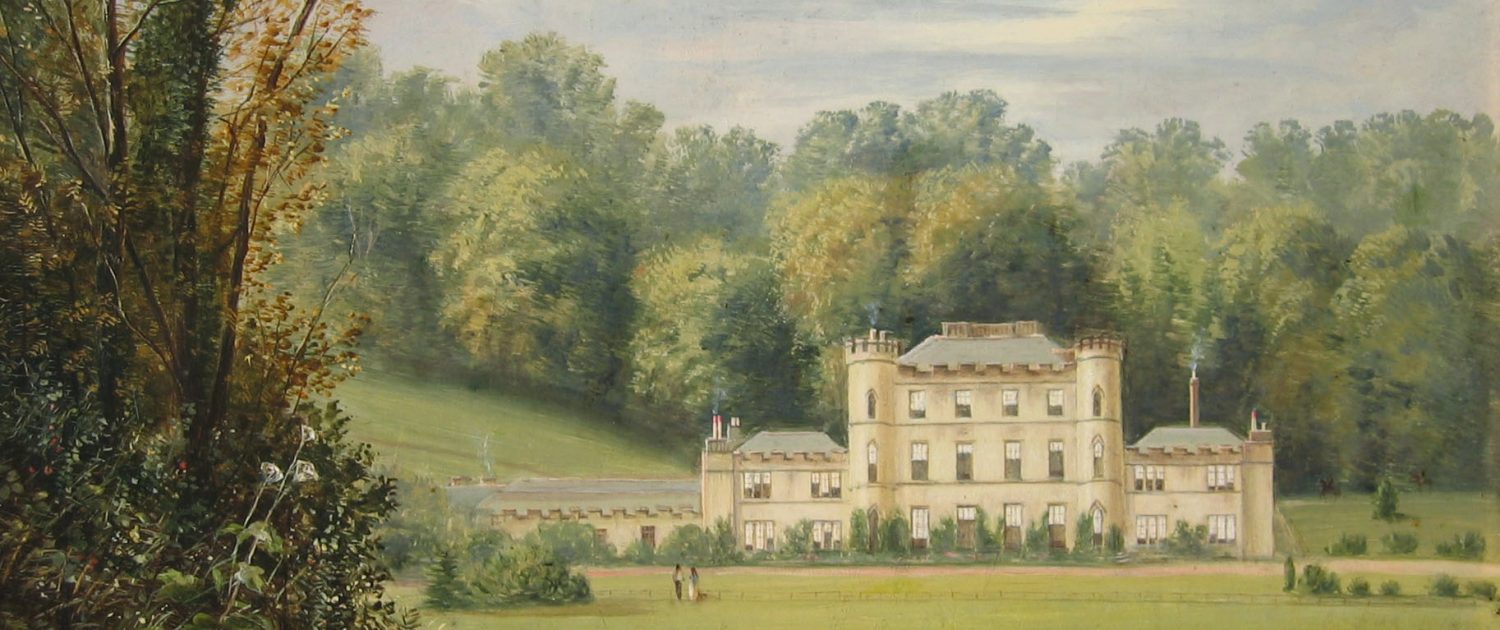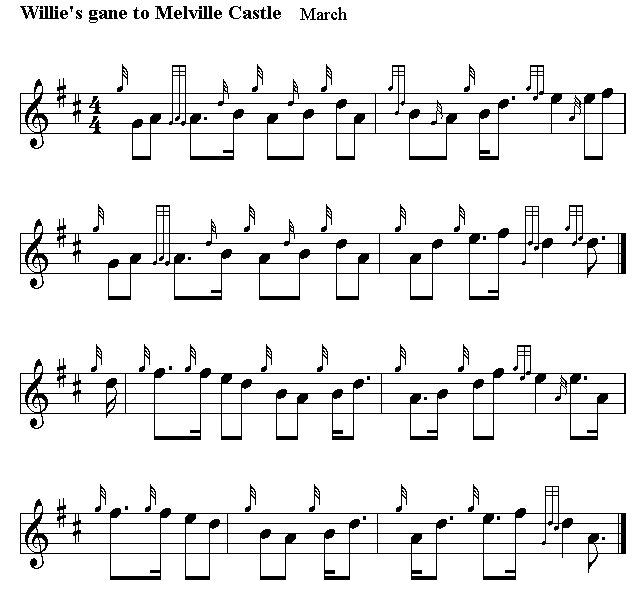 |
||

Best viewed in
|
Earliest records indicate that in 1155 in the
reign of King Malcolm IV, Malleville was an estate in the
ownership of an Anglo-Norman Baron called Galfrid de Malle who
was Sheriff of Edinburgh and Governor of Edinburgh Castle. It
remained in his family until the time of King Robert II in 1371
when, through marriage it passed to Sir John Ross of Halkhead.
The castle continued as the seat of that branch of the Ross
family for many generations.
In 1542, owing to the death of her father, King James V, Mary Stuart became Queen of Scotland when she was only six days old. Because of political and religious unrest in Scotland she was to spend her early years in France with her mother Marie de Guise, adopting much of French culture, and controversially, the Roman Catholic faith. In 1561, after the death of her husband King Francis II, Marie Stuart exchanged the culture and splendor of the French court and returned to Scotland, a nineteen year old widow. Though the Scottish Royal Court was established in Holyrood Palace in Edinburgh, the Queen settled her French retinue a few miles to the south, in an area which is known, even today, as Little France. In 1565 after four years of widowhood, and against the earnest pleadings of her advisors she chose to marry her Catholic cousin Lord Darnley, a disaster from which her later problems sprang. Her future life was to be etched in blood.
The Queen, a fine horsewoman, became a
frequent visitor to the nearby Melville Castle, invariably in
the company of her Italian secretary and close companion
Seigneur David Rizzio. This close friendship caused jealousy
and hatred in the mainly Protestant Scottish Nobles. In an
attempt to raise Rizzio’s standing the Queen tried to persuade
Lord Ross to give the Lordship of Melville to Rizzio. Though it
was not to be, Rizzio nevertheless took apartments in the
castle. The castle became known to the local people as Rizzios
house. This further incensed the Nobles. On one of the Queens
visits he planted a tree as a token of his love for her. The
tree, a majestic Spanish Chestnut (castanea sativa) survives to
this day some 450 years later. The Queen responded by planting
5 oak trees along the drive which also survive to this day.
Such blatant displays of love however, were
to be Rizzio’s downfall. The Scottish nobles persuaded Lord
Darnley, that Rizzio was the Queens lover and, in 1566 they
forced their way into her apartments in Holyrood palace and
murdered him before the Queens eyes. He was to suffer many stab
wounds. A few years later Lord Darnley was himself to be
strangled by the order of the Earl of Bothwell, Mary’s new
suitor. Mary was accused of complicity in the murder and was
held in captivity by the Scottish Lords. She was later to escape
and seek sanctuary in England where she was eventually to be
betrayed, imprisoned and beheaded by her cousin Elizabeth of
England. The trees however remain enduring symbols of The Queen
and Rizzio’s ill-fated affection for each other.
In 1762 Sir David Rannie purchased the
estate. He had acquired a vast fortune after 30 years of
trading with the East India Company in Eastern seas based on
Calcutta. His return to Scotland was short lived, as after 5
years he died leaving his two young daughters prey to the landed
gentry. The shrewd Henry Dundas, a lawyer, and son of the
neighboring estate of Arniston, was 24 when he married the 14
year old Elizabeth acquiring both her estate and her fortune.
He was clever and industrious with consuming ambition. His
service as a Member of Parliament in London under Prime Minister
Pitt, was to be rewarded by an appointment as the first Viscount
Melville. He also held the most prestigious and powerful
position in Scotland as Lord Advocate. This is commemorated in
a marble statue in the Advocates Hall in Edinburgh.
His new found wealth allowed him to commission James Playfair, the renowned Scottish architect of the time to design a new castle and in 1786 the old medieval edifice was demolished and the new Castle was built on its footprint. This building, an impressive castellated mansion with its spacious pillared entrance hall, elegant staircase and fine reception rooms, was created principally for entertaining on a grand scale.
In 1791 at the time of the French
revolution and Britain’s war with France, Lord Melville
was appointed Home Secretary and Minister for War. He
now wielded enormous power throughout Britain and its
dominions. His preoccupation in state matters however,
resulted in a rash investment and the loss of all of
Elizabeth’s fortune in the crash of the Ayrshire Bank.
This misadventure resulted in an impoverished Countess
and a mortgaged Melville Castle. His successful
political career however continued with his appointment
as First Lord of the Admiralty but these various
government appointments meant that he was required to
spend long months in London whereupon his long suffering
wife, her fortune lost, eloped into the arms of another.
In 1822, in anticipation of George IV’s visit to Scotland, an impressive fluted stone column 135ft high was erected in the gardens of St. Andrews Square to bear the figure of the King. However, the Edinburgh dignitaries, momentarily displeased with the King, surmounted the column with the figure of Lord Melville. The King was required to make do with a less prominent position in Hanover Street and a modest pedestal of only 15 feet. Lord Melville also had sight of the plans for the New Town, and to the dismay of the officials he acquired the principal site in St Andrews Square and built the finest classical mansion house in the city. The church originally intended for the site had to be relocated to George Street. It is known as Saint Andrews ‘the round church which leaves no corner for the devil.’ In 1828, King George IV again visited Scotland as a guest of the Duke of Buccleuch at Dalkeith Palace. Whether aware of his displacement from St. Andrews Square, the King visited Melville Castle. For this, a special carriage way, now Melville Gate Road, was created between the two mansions. A grand review of the Midlothian Yeomanry, of which Lord Melville was Colonel, took place on the south lawn. For this occasion Lord Melville arranged a lavish Banquet and among the distinguished personages gathered to meet the King was Sir Walter Scott who lived nearby and was a frequent visitor to the Castle. It is recorded that a sumptuous meal was enjoyed by the guests and the members of the Yeomanry, who were amply provided for. The Estate workers also enjoyed a feast and there was still enough food remaining for the poor of the district to be fed.
In 1842, on the occasion of her first
tour of Scotland, 23 year old Queen Victoria was a guest
at the Castle and was enamored by the beautiful and
tranquil character of the Estate. Walter Scott was also
inspired to write of ‘Melville’s Beechy Grove’ in his
work ‘Grey Brother’.
The Castle remained in the hands of the Dundas family for some generations and after the Second World War, the Ninth Lord Melville moved to a smaller house on the Estate and the Castle was temporarily leased as an army rehabilitation centre and later as a hotel. In the late 1980’s the Castle, the Estate and the adjoining farms were sold. The Castle however, suffered badly from neglect and the ensuing dry rot brought it to dereliction and eventual closure. In 1993, after being open to the weather and with the roof and floors collapsing, it was acquired by the Hay Trust and over a period of 8 years, it underwent extensive restoration and refurbishment to become again the fine and elegant building you see today. It remains in the ownership of the Trust and was opened as a hotel in June 2003.
During renovation, an apparition,
shrouded and featureless but unmistakably female in form and
deportment, was seen to move from the fireplace of the
Library bar towards and through the wall opposite. As work
progressed, when the old plaster was stripped from the wall,
a built up doorway was revealed. It was re-opened and now
serves as the entrance to the Arniston room from the
Library. The spirit has also been seen hovering at the foot
of the bed in a first floor bedroom and most recently as a
shadowy figure at the window. These visitations persist and
invariably occur at dusk or during the hours of darkness!
Speculation suggests that it could be the distraught spirit
of Mary Stuart searching for her close companion David
Rizzio and their times of happiness at Melville Castle.
|
|

